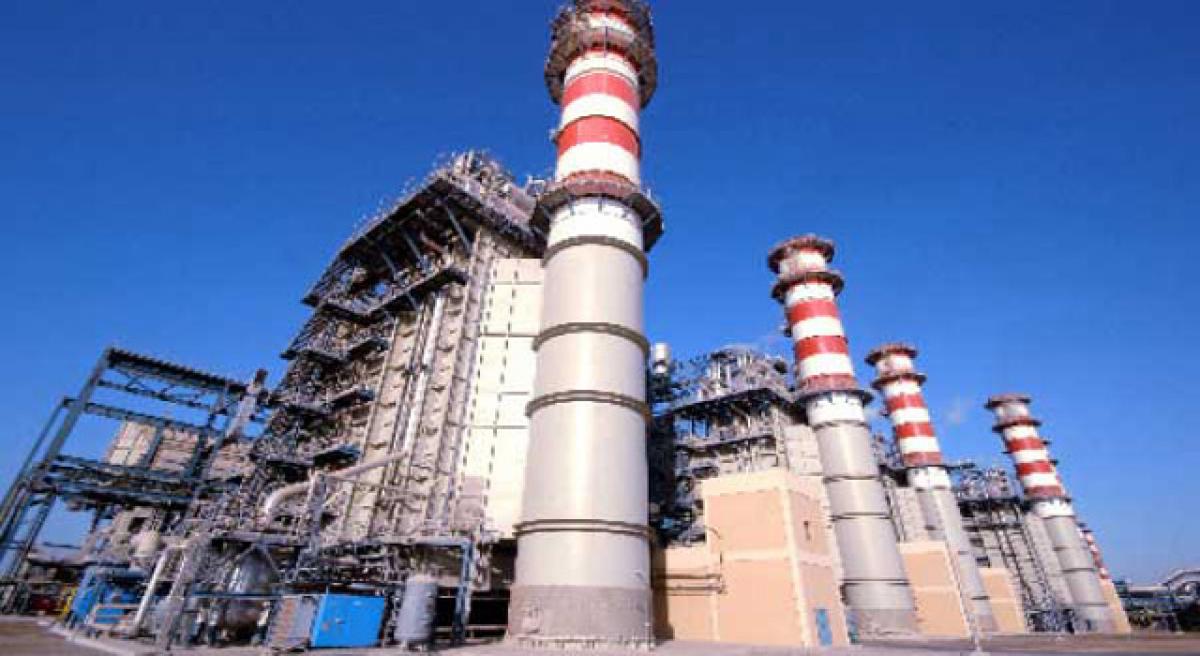Live
- DEO suspends teacher accused of sexual assault
- PM ‘cursing’ Congress out of despair: Maharashtra Cong Chief
- Applications are invited for Junior Colleges Scheme District Scheduled Castes Development Officer Ramlal
- A nomination was filed on the second day for the Nagar Kurnool parliamentary seat
- SP Gaikwad inspected the Telangana Amarnath Saleswaram Jatara yatra arrangements
- Rahul Gandhi's decision to contest from Wayanad shows 'lack of confidence': BJP President Nadda
- IPL 2024: Delhi bowlers will go after all of SRH’s top-order batters, says head coach Ricky Ponting
- At Amroha rally, PM Modi sends out ‘meaningful’ message for Muslims and Hindus
- Tripura records highest 79.83 pc voter turnout in Northeast
- The government has to clear the confusion
Just In

In the central Indian village of Raikheda, the construction of a thermal coal power plant once promised jobs and economic progress. Years after its completion though, the debt-saddled project that promised power supply to hundreds of thousands of homes, sits mostly idle.
Mumbai : In the central Indian village of Raikheda, the construction of a thermal coal power plant once promised jobs and economic progress. Years after its completion though, the debt-saddled project that promised power supply to hundreds of thousands of homes, sits mostly idle. It is unable to buy coal to power the plant or sell electricity to utilities. Dozens of nearby stores that were reliant on the project's success have shut down.
Raikheda is not alone. A Reuters analysis of India's power output data shows over 50 coal- and gas-fired power plants in India are largely mothballed, or operating at a bare minimum. They are symbolic of a broader power sector struggling to service and pay off billions of dollars in loans, a major debt risk for the banking sector that could come to a head in coming months and ultimately leave tax payers picking up the bill.
After steel, power firms make up the second-biggest portion of India's $150 billion mountain of bad debts. Steel made up roughly a fifth of the bad debts and power more than 12 per cent. Last month, the central bank ordered commercial banks – the main financiers of infrastructure projects in India, including the semi-complete, or largely mothballed power plants – to resolve non-performing debt problems in six months, or push defaulters into bankruptcy.
That could leave the state-dominated banking sector with the bad debts and hasten a government recapitalisation of the sector. "These loans aren't going anywhere," said Supratim Sarkar, group head of structured finance at SBI Capital Markets in Mumbai. "The government will have to take care of the banking sector."
GMR Infrastructure <GMRI.NS>, which also operates the New Delhi airport, built the Raikheda plant in the central state of Chhattisgarh with around 80 billion rupees ($1.24 billion) in loans. GMR did not respond to multiple requests for comment, although earlier this year it announced a debt restructuring for the Raikheda plant.
GMR commissioned the first phase of the 1.4 gigawatt Raikheda station in 2014 and its second in 2016, but they are fired up only occasionally to keep the power systems operable.During construction thousands were employed at the site and the local economy was bustling. Many farmers sold land in exchange for jobs at the plant.
Next domino to fall
India's stalled or stranded power projects account for nearly 50 gigawatts of electricity production capacity, or roughly 15 percent of India's total of more than 300 gigawatts.That is potentially critical output in a fast-growing economy where total power-supply capacity is, on paper, sufficient to meet demand. But blackouts are not unusual during peak hours.
Several stranded projects are owned by the likes of Essar Power, GVK Power <GVKP.NS> and Reliance Power <RPOL.NS>, who rushed to set up power projects in the past decade when tariffs were rising. But the plans came unstuck as the financial health of government-owned, state-level power distributors weakened, leaving them unwilling to meet the prices demanded by power plants, while coal and gas supplies failed to keep up with the needs of the newly opened power plants.
In 2015, India budgeted about $11 billion for a four-year bank bailout programme, although analysts say this amount falls woefully short of requirements given Basel III norms and the provisioning needed for bad loans. Indeed, S&P Global Ratings analyst Deepali Seth-Chhabria estimates Indian banks will need 2.5 trillion rupees ($39 billion) for recapitalisation.
Policy missteps
Compounding the risks for the coal and gas-fired power sector, India's most-populous state of Uttar Pradesh recently rescinded eight power purchase deals the prior government had inked, deeming them too costly. And a shift in government policy in favour of clean energy further undermines the prospects of power plants reliant on coal. Earlier this year, GMR said it had agreed with banks to a strategic debt restructuring (SDR) for its Raikheda plant, giving lenders an equity stake in the asset and the ability to force a sale.
By Promit Mukherjee & Devidutta Tripathy

© 2024 Hyderabad Media House Limited/The Hans India. All rights reserved. Powered by hocalwire.com







